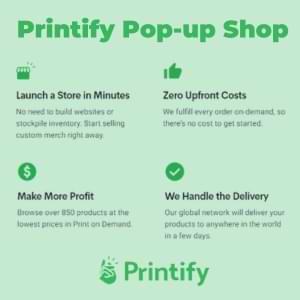Ways to Repurpose Video Content, Especially Livestreams
YouTube is a popular video-sharing platform that has become a staple in the online world. With over 2 billion monthly active users, it’s no surprise that YouTube has become a go-to destination for content creators and advertisers alike.
However, with such a vast user base, it’s important to understand the platform’s policies, resources, and features to make the most out of your YouTube experience. Whether you’re new to YouTube or a seasoned veteran marketer, understanding the platform’s policies, resources, and features is essential to making the most out of your time on the platform and success in repurposing your content.
Repurposing video content is the process of taking existing video content and adapting it for use on different platforms or in different formats.
Repurposing can include cutting down longer videos into shorter clips for social media, creating transcripts or captions for accessibility, or even using footage from past videos to create a new video altogether. The advantages of repurposing video content are numerous — it allows content creators to reach a wider audience, save time and resources by reusing existing content, and improve SEO by creating more opportunities for content to be discovered.
By repurposing video content, creators can maximize their reach and engagement while minimizing the effort and resources required to create new content from scratch.
Ways to Repurpose a Livestream Video
- Edit and create a shorter highlight reel: Take the best moments from your live stream and create a shorter, more condensed version that can be shared on social media or your website.
- Turn it into a podcast: Extract the audio from your live stream and turn it into a podcast episode that can be uploaded to platforms like Spotify or Apple Podcasts.
- Transcribe the video: Use a transcription service or software to create a written transcript of your live stream. This can be used as an “extra” benefit with your blog post, or use it to create social media captions.
- Create a blog post: Use the content from your live stream to create a blog post that expands on the topics covered and provides more in-depth information.
- Share clips on social media: Take short clips from your live stream and share them on social media platforms like Twitter, Instagram, or TikTok.
- Turn it into a webinar: Use the content from your live stream to create a webinar that can be shared with your audience.
- Use it for training purposes: Turn your live stream into a training video that can be used to onboard new employees or train existing ones.
- Use it for customer support: Use your live stream to answer frequently asked questions and create a video library that customers can refer to for support.
- Use it for training materials: If the live stream was a training session or workshop, repurpose the content for future training materials.
- Create a YouTube series: Use your live stream as a pilot for a new YouTube series that covers similar topics.
- Turn it into a product demo: Use your live stream to showcase a new product or service and create a video that can be shared with potential customers.
- Turn it into an e-book: Use the content from the live stream to create an e-book. This can be a great lead magnet for your business.
Policies and Guidelines on Repurposing Content
Copyright policies on the platform are designed to protect the intellectual property of content creators while ensuring that users can still access a wide variety of content. YouTube actively enforces copyright policies to prevent the unauthorized use of copyrighted material. Content creators can file a copyright complaint if they believe their content has been used without permission. YouTube also provides tools for content creators to manage their content and prevent unauthorized use, such as Content ID, which scans uploaded content for potential copyright infringement.
In addition to copyright policies, YouTube has community standards that govern the types of content that are allowed on the platform. These standards are designed to keep users safe and create a positive experience for everyone. YouTube removes content that violates these standards, which include policies on hate speech, harassment, and violence. Users can report content that they believe violates community standards, and YouTube’s content moderation team reviews these reports to determine if action needs to be taken.
By enforcing these policies, YouTube aims to create a safe and welcoming environment for all users.
- The community guidelines ensure that users can have a positive experience on the platform without fear of harassment or hate speech.
- Content creators have the ability to manage their content and prevent unauthorized use through tools like Content ID.
- YouTube removes content that violates community standards, including policies on hate speech, harassment, and violence.
- Users can report content that they believe violates community standards, and YouTube’s content moderation team reviews these reports to determine if action needs to be taken.
However, if the video livestream is yours, you own the copyright, so there isn’t any issue! Go ahead and edit that livestream into video segments featuring a specific topic or segment from the larger show; cut out short clips for YouTube #shorts and Instagram Reels short video; pull audio clips; grab screenshots as picture posts on your social channels; and use the video transcript as the foundation for a blog article.
When it comes to the ways to repurpose your video live stream, there really isn’t any limit on the amount of content you can generate from just one video or weekly livestream!
Frequently Asked Questions About Repurpose Video Content
Q: What does it mean to repurpose video content?
A: Repurposing video content refers to taking an original video and using it in new ways, such as turning it into shorter videos for social media channels, creating a video series, or using parts of it in other pieces of content. This can be a great way to get more use out of your video and reach a wider audience.
Q: What are some clever ways to repurpose video content?
A: There are many ways you can repurpose your video content, such as turning it into a short-form video for TikTok or Instagram Reels, using parts of it in an explainer video, or creating a video ad. You can also use snippets of your video for social media posts, or repurpose longer videos into shorter ones for platforms like YouTube Shorts or Pinterest.
Q: Why would I want to repurpose my video content?
A: Repurposing video content can save time and resources, as you can use an original video in multiple ways. It can also help you reach a wider audience by adapting your content to different platforms and formats, and can be a great way to reinforce your message and build your brand.
Q: What are some of the benefits of repurposing video content?
A: Some benefits of repurposing video content include increased reach and engagement on social media platforms, more opportunities to connect with your audience, and greater flexibility in your content marketing efforts. Repurposing video also allows you to experiment with different formats and messaging to see what resonates best with your audience.
Q: What are some popular ways to repurpose video content for social media?
A: Some popular ways to repurpose video content for social media include creating short-form videos for platforms like TikTok and Instagram Reels, using snippets of your video for Instagram Stories and Twitter posts, and turning long-form videos into shorter ones for YouTube and Facebook. You can also experiment with different formats, like creating how-to videos or behind-the-scenes clips.
Q: How can I repurpose my YouTube video for TikTok?
A: To repurpose your YouTube video for TikTok, you can create short clips or highlight reels using editing software like iMovie or Adobe Premiere. Make sure to edit your video to fit TikTok’s vertical format and keep your content engaging and entertaining.
Q: Is it easy to repurpose video content?
A: Repurposing video content can be easy if you have the right tools and strategy in place. Using video editing software can help you create different versions of your content for various platforms, and planning ahead can simplify the process.
Q: How can I use a video ad for my marketing efforts?
A: You can use a video ad as part of your content marketing strategy to drive traffic to your website, increase brand awareness, or promote a specific product or service. Make sure your ad is engaging, visually appealing, and delivers a clear message to your audience.
Q: Are there affordable ways to create a video?
A: Yes, there are many affordable ways to create a video, such as using free video editing software like iMovie or Adobe Premiere Rush, filming on your smartphone, or hiring a freelancer. You can also repurpose existing video content to save time and resources.
Q: How can content repurposing help my social media marketing efforts?
A: Content repurposing can help your social media marketing efforts by allowing you to create more content with less effort, reach a wider audience, and test different formats and messaging. Repurposing video content for social media can also improve engagement and help you build your brand.
For more information about maximizing your video livestream, check out this MarketingProfs article.
Repurposing video content and livestreams can maximize your reach. When you repurpose your video content, you increase your potential audience. #youtube Share on X
Note: Some links on this page are affiliate links meaning that if you click on my link and make a purchase, I will receive a small commission. It does not however affect the price you pay. Plus, it’s a great way to support me and the content I’m providing.







